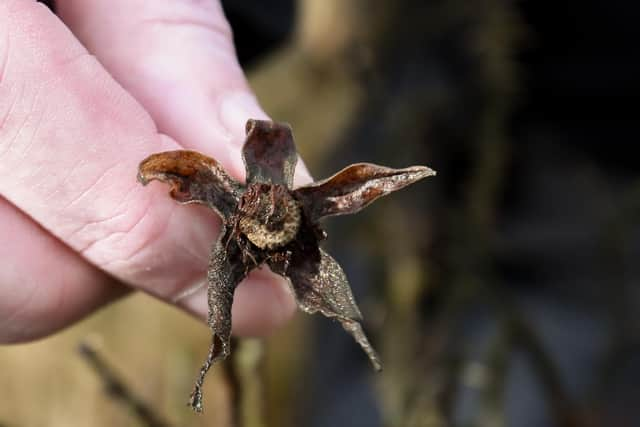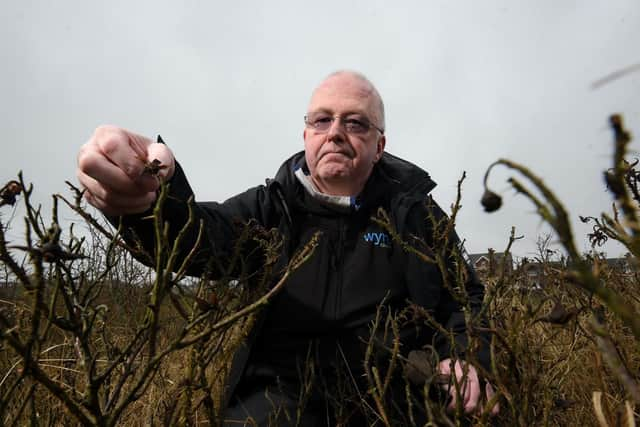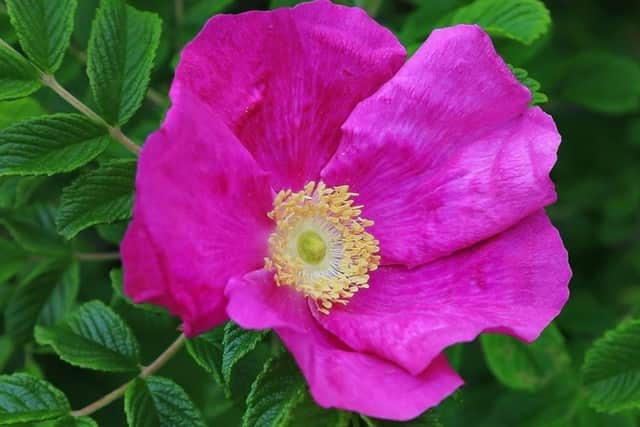Plans to eradicate pretty pink menace in Fleetwood's dunes
and live on Freeview channel 276
The invasive species Rosa rugosa (Japanese Rose) has managed to establish itself in the sand dunes across several of Fleetwood’s beach areas.
And this could spell bad news for the specialist habitat of the dunes, an important wildlife habitat which has been designated as a protected area.
Advertisement
Hide AdAdvertisement
Hide AdThe plant grows so quickly and aggressively that it is capable of putting native species at risk.


Although originally a native of sandy areas in the Far East, many of these plants have been imported into Britain because many gardeners admire the pretty blooms, and it is not particularly rare.
But in a protected environment like the dunes, it could spell disaster.
Now Wyre Council is working with experts from Natural England and Cumbria Wildlife Trust on a special project, one of whose aims is to eradicate this tenacious grower from the dunes.
Advertisement
Hide AdAdvertisement
Hide AdThe multi-partnership project, Dynamic Dunescapes, is part-conservation and part public engagement exercise, with the aim of preserving these precious habitats across the country and making the public more aware of them.


In Fleetwood, dealing with Rosa rugosa has become one of the key missions.
Eve Mulholland, engagement officer for Cumbria Dynamic Dunescapes, said: “Fleetwood isn’t the only place with this issue, but the extent of the growth of this plant in Fleetwood is incredibly significant compared to other areas.
“We are looking at two ways possible of eradicating it. The first would entail pulling it up with a mechanical digger and then burning it, whilst the second would involve treating it locally with herbicide.
Advertisement
Hide AdAdvertisement
Hide Ad“We will have to destroy it, rather than remove it, to prevent it become a habitat risk anywhere else. We’re not sure how it reached the dunes, but its seeds are easily spread and once it takes hold, it is tenacious.


“Whichever means we use to remove it, we will be sensitive to the immediate environment.”
It is ironic that to some people, Rosa rugosa is a welcome addition to hedgerows, bringing a dash of brilliant purple pink, or occasionally dazzling white, to garden borders, and many of them have been imported into the country from the Far East for that reason.
In such garden environments it poses no real problem, but conservationists say that once it gets into sand dunes it out-competes native plant species by growing rapidly and forming a dense stand, preventing sunlight from reaching ground level.
Advertisement
Hide AdAdvertisement
Hide AdIt spreads outwards quickly by using creeping rhizomes which then develops suckers, making it difficult to eradicate.
The specialist wildlife in Fleetwood’s dunes include sea holly, whose long roots anchor it into the ground, the delicate coastal leaf cutter bee, feeding off the nectar of the sea holly and burrowing into the sandy substrate to lay its eggs.
More than 120 insects have been recorded there, including the dune chafer beetle, a species vulnerable to disturbance as it lays its eggs on top of the sand.
If the Japanese rose is not stopped, the precious environment may struggle to fully recover.
Advertisement
Hide AdAdvertisement
Hide AdWyre Council says: “We are working in partnership to help control Rosa rugosa and protect the dunes.”
Dynamic Dunescapes is supported across the UK by the National Lottery Heritage Fund and the EU LIFE Programme.
The project is a partnership between Natural England, Plantlife, National Trust, Natural Resources Wales and the Wildlife Trusts.